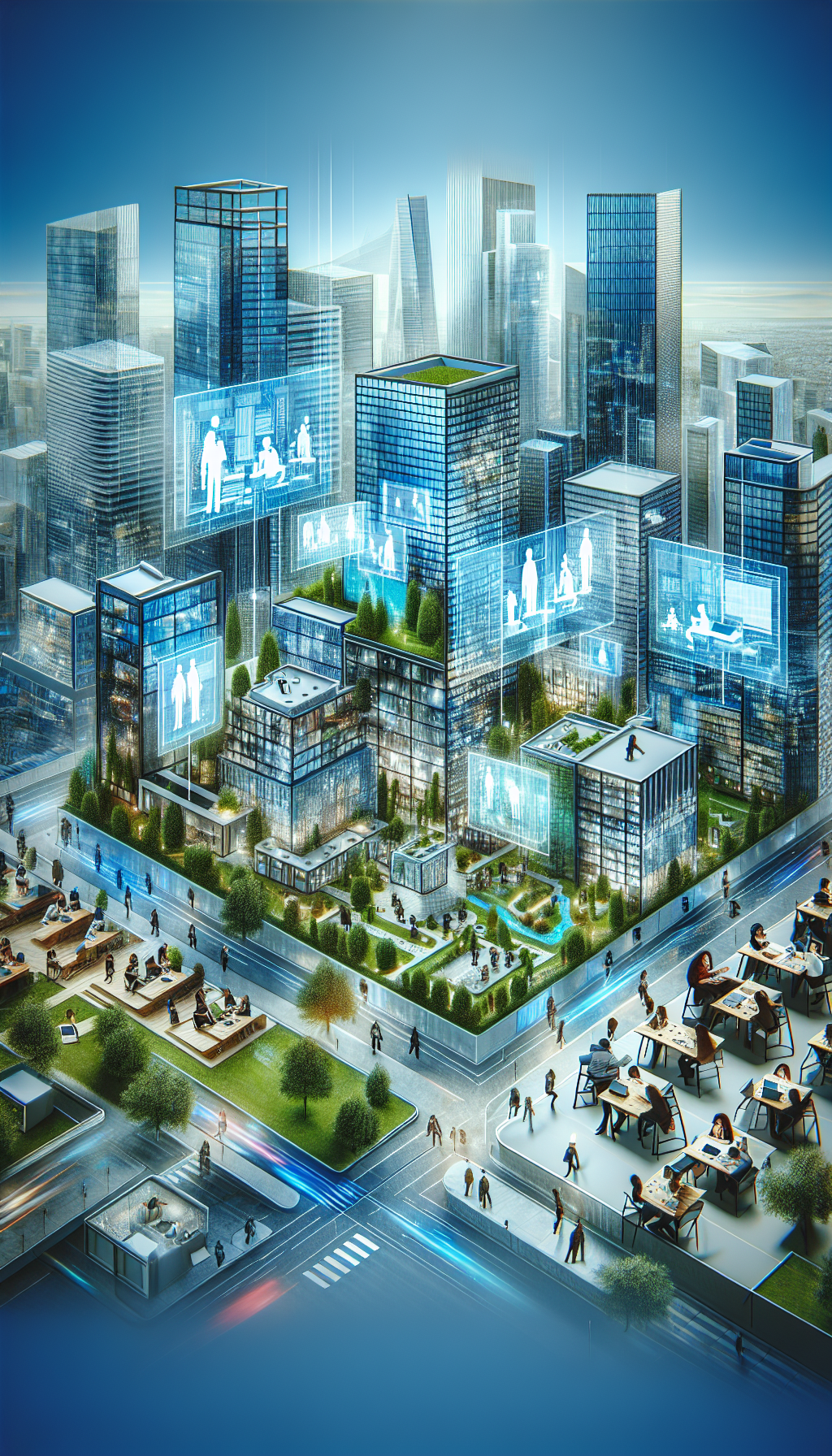The Evolution of Remote Work and Its Impact on Office Spaces in Urban Areas
I. The Rise of Remote Work
The COVID-19 pandemic served as a catalyst for the adoption of remote work across various sectors. Organizations swiftly transitioned to remote operations, challenging traditional work paradigms. Companies previously hesitant to embrace flexible work arrangements recognized that productivity could be maintained, or even enhanced, outside the conventional office setting. As a result, remote work is no longer viewed as a temporary solution but rather a permanent facet of modern employment.
II. Changing Employee Expectations
Employees have experienced the advantages of remote work firsthand, including improved work-life balance, reduced commuting time, and the ability to create a personalized workspace. These benefits have led to a significant shift in employee expectations. According to a survey by Gallup, 54% of workers expressed a desire for a hybrid model that combines remote and in-office work, further emphasizing the need for flexibility in work arrangements.
III. Altered Urban Office Demand
With a substantial portion of the workforce adapting to remote or hybrid models, the demand for traditional office spaces in urban areas is transforming. Companies are reevaluating their office needs, focusing on quality over quantity. Instead of maintaining a large office footprint, businesses are opting for smaller, collaborative spaces designed for team gatherings or client meetings rather than everyday use.
IV. Flexible Office Solutions
As the demand for traditional office space declines, flexible office solutions such as coworking spaces and remote work hubs are gaining popularity. Coworking spaces promote community and collaboration, attracting freelancers, remote workers, and small businesses. Providers like WeWork and Spaces have expanded their offerings, allowing users to choose from varying membership plans and access different locations based on their needs.
V. The Role of Technology
Technological advancements play a pivotal role in enabling remote work. Tools such as Zoom, Slack, and Microsoft Teams facilitate communication and collaboration, bridging the gap between remote and in-office employees. High-speed internet access and cloud-based applications ensure seamless workflows, allowing teams to operate efficiently regardless of their physical location. As technology continues to evolve, it will reshape how workspaces are designed and utilized in urban environments.
VI. Redesigning Office Layouts
As businesses adapt to hybrid models, the traditional office layout is undergoing significant changes. Open-plan designs that dominated the past are giving way to versatile spaces that promote collaboration while respecting individual privacy. Soundproof booths for virtual meetings, breakout areas for brainstorming, and cozy lounges for informal discussions are becoming essential components of modern office design. These adjustments address the varying needs of employees who split their time between remote and in-office work.
VII. Sustainability and Wellness in Office Design
Post-pandemic, there is an increased emphasis on creating healthy and sustainable work environments. Urban office spaces are being designed with wellness in mind—incorporating natural light, green spaces, and ergonomic furniture. Biophilic design elements, such as indoor plants and natural materials, are essential for enhancing employee wellbeing and productivity. Additionally, sustainable practices such as energy-efficient appliances and reduced water usage are becoming standard to mitigate the environmental impact of office spaces.
VIII. Multi-functional Workspaces
The notion of multi-functional spaces has become paramount in responding to the evolving nature of work. Urban office designs are leaning toward flexibility, incorporating areas that can easily transition from collaborative work sessions to individual focus tasks. Conference rooms equipped with the latest audiovisual technology can seamlessly transform into training spaces or brainstorming hubs, thereby maximizing the utility of every square foot.
IX. Remote Work Policy Implications
As companies adopt flexible work policies, they must establish clear guidelines regarding remote work expectations, productivity metrics, and communication protocols. Developing a robust remote work policy not only sets a framework for employees but also fosters accountability and transparency. This shift in policy-making will likely lead to improved job satisfaction and employee retention, benefiting organizations in the long run.
X. Real Estate Market Dynamics
The real estate market is experiencing profound changes due to shifts in remote work dynamics. As demand for traditional office spaces wanes, some landlords are reimagining their offerings. There’s a trend toward converting underutilized office buildings into mixed-use spaces, incorporating residential units, retail, and recreational facilities. This shift not only addresses the changing needs of urban populations but also enhances the vibrancy of city life.
XI. Urban Planning and Infrastructure Adaptation
Urban planners are now more than ever focusing on building communities that support remote work lifestyles. City infrastructure is adapting to accommodate this shift, with an emphasis on enhancing public transport, developing pedestrian-friendly areas, and creating community hubs. These urban spaces facilitate remote work and stimulate local economies as bustling areas of commerce and social engagement.
XII. The Future of Employee Engagement
Employee engagement is taking on new forms as remote work reshapes how teams connect. Innovative approaches such as virtual team-building activities, online social events, and mental health resources are emerging as essential tools to maintain camaraderie among remote staff. The focus on engagement will be vital in a future where physical presence is no longer a necessity for connection and productivity.
XIII. Conclusion: The New Norm
The shift towards remote work is not merely a trend; it signifies a fundamental change in how we perceive work, collaboration, and office environments. Urban office spaces will continue to evolve, shaped by technological advancements, employee preferences, and a commitment to sustainability. Companies embracing these changes will not only thrive in their respective industries but will also contribute to reshaping the urban landscape for future generations.
The interplay between remote work and office space will thus define the modern workplace, creating a dynamic and innovative environment that accommodates the needs of a diverse workforce. As organizations navigate this landscape, they will pave the way for a more flexible, inclusive, and productive approach to work in urban settings.

